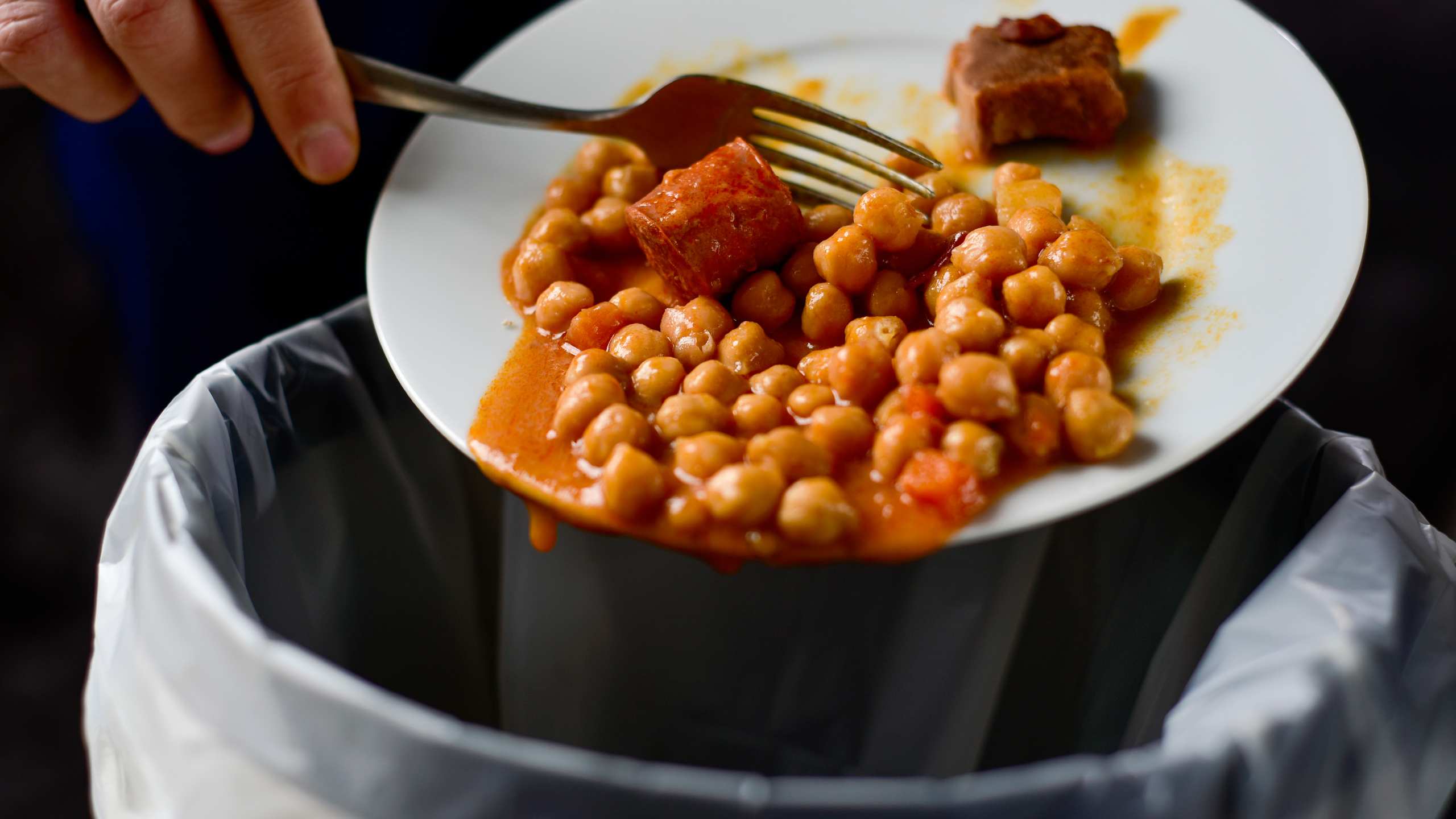What is food waste?
According to the Food and Agriculture Organization of the United Nations (FAO), food waste occurs whenever food produced for consumption fails to fulfil this purpose and ends up in the rubbish instead. While it’s true that food waste happens at every stage of the production process, involving various players, most of it happens at home.
“There’s only one potato left, it’s going in the rubbish can”; “These apples look funny, I’d rather have bananas”; “The tomato sauce was opened two days ago, is it still good?”. Thoughts like these can shape our decisions regarding the food we buy and consume, contributing to more food waste.
Throwing a single portion of rice in the rubbish can may seem like an inconsequential act, but every time we do it, we’re contributing to the production increase and adjacent greenhouse gas emissions, to an increasing in household expenses and to promote inequalities in access to safe food.
Everything is lost, nothing is transformed: these are the most wasted foods
In 2021, each inhabitant of the European Union (EU) wasted an average of 131 kg of food. Most of this – 70 kg per inhabitant – was generated at home. In the image below, you can find out which categories of food are the most wasted in the European Union. Do they belong in your fridge or pantry?

Fruit and vegetables 46%; Cereals 12%; Potatoes, roots and tubers 11%; Meat 11%; Oilseeds and pulses 10%; Dairy 5%; Fish 3%; Eggs 2%. Font: The European’s Comission Knowledge Centre for Bioeconomy (food waste generated in the EU-28 by food group, 2011).
Each category includes various foods. The first one refers to fruit and vegetables, from bananas to onions and tomatoes. Cereals include wheat, rice, corn, barley, rye and oats, among others. In addition to potatoes, which are tubers, the third category includes foods such as sweet potatoes, yams and beet. Oilseeds and legumes include nuts and sunflower seeds, for example. The “meat” category refers to poultry and red meat, and fish includes seafood. Dairy products are mainly milk.
What are the causes and consequences of food waste?
The main causes of food waste at home are:
- Lack of meal planning.
- Excessive and impulsive food purchases.
- Inadequate storage.
- Not using leftovers and scraps.
- Not understanding food labels.
Food waste has consequences at many levels:
- Food waste is wasting the planet’s natural resources: When food ends up in the rubbish, all the resources that were needed to produce it (such as water and energy) are also wasted;
- Food waste is contributing to climate change: The disposal of food implies the emission of greenhouse gases, having an impact on climate change – food loss and food waste generates 8% to 10% of global greenhouse gas emissions;
- Food waste is wasting money: the more food we put in the bin, the more we increase our household bills at the end of the month. What’s more, if there is “wasteful” production, the entire supply chain is financially affected, which can jeopardise the availability of affordable food – in Europe alone, food waste amounts to around 132 billion euros a year.
- Food waste is accentuating inequalities in access to food: according to the report The State of Food Security and Nutrition in the World 2023, published by the FAO and a group of other international organisations, between 691 and 783 million people around the world went hungry in 2022 – wasting food only makes this imbalance more pronounced.
How to tackle food waste at home
Eating is possibly one of humanity’s greatest pleasures. But access to safe, quality food is not just a right (to which some 783 million people do not have access) – we all have a duty to respect the food we put on our plates.
The fight against food waste includes two major tasks: producing responsibly and ensuring that food is consumed consciously at home, making full use whenever possible.
Here are some tips for reducing food waste:
-
Meal planning
It may require some patience, but your wallet and the planet will thank you – why not do this task as a family? For example, if you decide what the main meals will be the following week, you’ll know what food you need to buy. Without a plan, you could end up buying products without knowing exactly what to do with them, only to sit in the fridge or pantry until they expire.
-
Make an inventory and a shopping list
Keep track of all the products in your fridge, freezer and pantry. Then, based on your meal planning, make a shopping list to ensure you only buy what you need.
-
Store food correctly
Each food has its own storage requirements. For example, certain fruits, such as bananas, shouldn’t go in the fridge. And did you know that it helps to keep an apple next to potatoes to prevent them from sprouting? Find out how you can freeze food too.
-
Give leftovers a happy ending
Anything that’s left over, from a slice of bread to a lasagna, can be frozen or used for a delicious and nutritious new meal. Take a look at some of our recipes to combat food waste.

-
Use peels, stems, leaves and branches
It may sound strange, but everything can be used. For example, broccoli stalks can be used in soup; potato peelings can be used to make delicious chips.
-
Pay attention to portion size
Who hasn’t cooked too much rice or pasta? Some packages state the most suitable portion depending on the number of people you’re serving.
-
Pickling and composting
Pickling, or the art of preserving fruit and vegetables in vinegar, is one of many solutions for giving these foods a new lease on life. Composting, on the other hand, means using food waste as fertilizer for the soil, breading new crops you want to grow at home.
-
Pay attention to labels
Food that says “best before” is often safe to eat after that date. Learn how to read food labels and notice if the product has any damage or a strange smell and taste it before considering it a “hopeless case”.
-
Get creative
Frozen bread for a morning toast? Fruit and vegetables for natural juices, ice cream or a nutritious soup? Croquettes from leftover rice? A vegetable broth made from the water where the carrots were boiled? There’s plenty to do in the kitchen without food waste.




